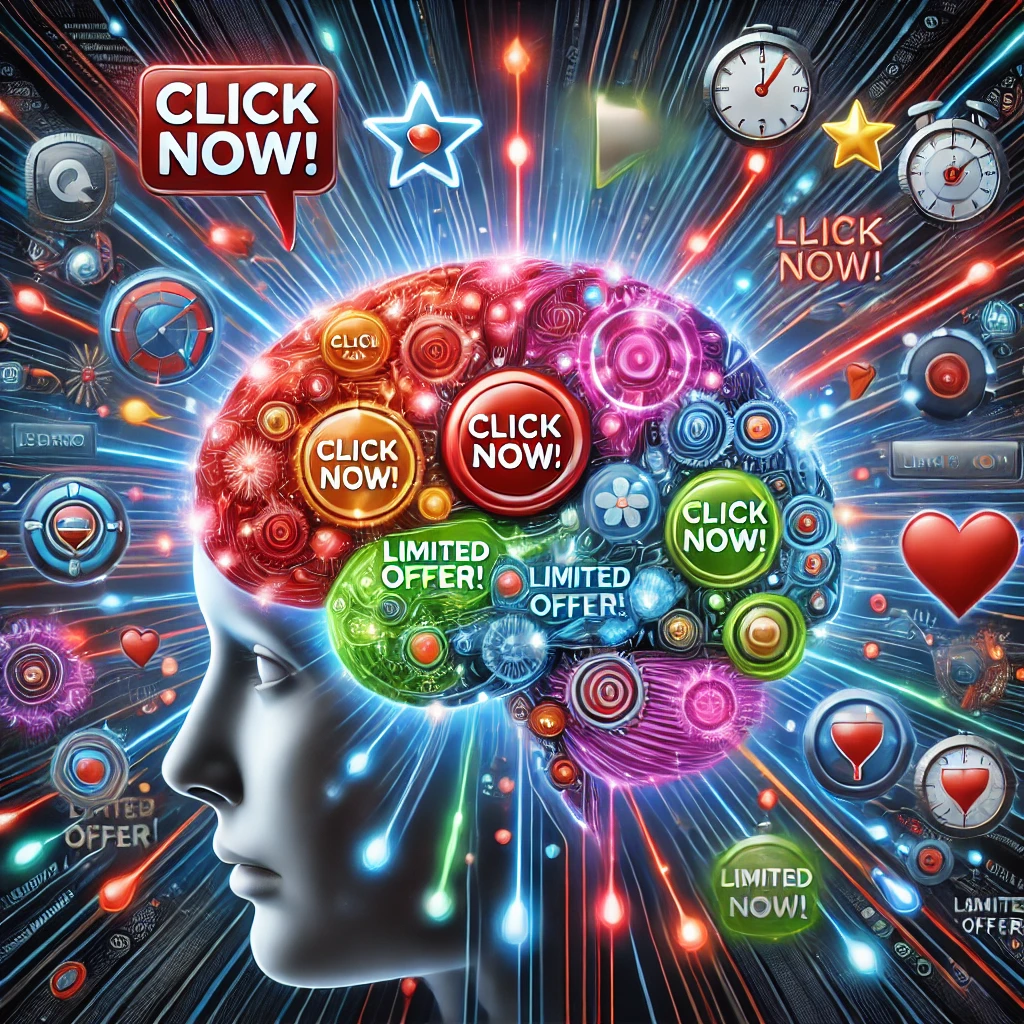The Psychology Behind Clicking: How to Craft Ads That Speak to the Subconscious

In today’s competitive digital landscape, creating ads that not only capture attention but also inspire action is a challenge. By leveraging behavioral psychology, marketers can craft advertisements that tap into the subconscious, fostering stronger connections and driving engagement. Here’s how you can use psychological principles to create compelling ads that convert.
1. Understanding the Power of Emotional Triggers
The subconscious mind often makes decisions based on emotions rather than logic. By evoking emotions like joy, curiosity, or urgency, your ads can resonate deeply with your audience. For instance:
- Joy: Use vibrant visuals and uplifting messages to associate your brand with positive experiences.
- Urgency: Highlight limited-time offers or exclusive deals to create a fear of missing out (FOMO).
- Curiosity: Pose intriguing questions or teasers that compel users to click to learn more.
2. Utilizing the Principle of Reciprocity
Humans are wired to return favors. Offering free resources, such as eBooks, templates, or exclusive content, can trigger a sense of obligation to reciprocate by engaging with your brand.
- Example: “Download our free guide to mastering social media marketing!”
This approach not only builds trust but also fosters a sense of goodwill toward your brand.
3. Harnessing the Power of Social Proof
People tend to follow the actions of others, especially in uncertain situations. Including testimonials, reviews, or usage statistics in your ads reinforces trust and credibility.
- Example: “Join over 50,000 satisfied customers who love our product!”
Visuals, such as star ratings or user-generated content, can further amplify the impact.
4. Applying the Scarcity Principle
The idea of scarcity creates a sense of urgency and exclusivity. When something feels rare, it becomes more desirable.
- Example: “Only 5 spots left! Reserve yours now.”
Scarcity taps into the subconscious fear of losing an opportunity, encouraging immediate action.
5. Leveraging Color Psychology
Colors evoke specific emotions and behaviors. Choosing the right colors can significantly influence ad performance:
- Red: Excitement and urgency
- Blue: Trust and reliability
- Green: Health and growth
Ensure the color scheme aligns with your brand identity and the emotions you want to evoke.
6. Crafting Clear and Compelling Calls-to-Action (CTAs)
CTAs are critical in guiding the audience toward the desired action. Phrases like “Shop Now,” “Learn More,” or “Get Started” create a sense of direction. Combining CTAs with urgency (“Limited Time Offer”) enhances their effectiveness.
7. Using Anchoring to Shape Perception
Anchoring is the tendency to rely on the first piece of information encountered. In advertising, you can use this principle to frame offers:
- Example: “Normally $100, now just $49.99!”
This makes the discounted price appear even more attractive compared to the original.
8. Employing Visual Hierarchy
The human brain processes visuals faster than text. Using a clear visual hierarchy helps direct attention to key elements, such as the product image, headline, and CTA.
- Example: Bold headlines, contrasting CTAs, and appealing visuals can guide users seamlessly.
9. Tapping Into Loss Aversion
People fear losing more than they value gaining. Highlighting what users might miss out on can spur action:
- Example: “Don’t miss out on the deal of the year!”
10. A/B Testing to Optimize Psychological Impact
Not every psychological tactic works for every audience. A/B testing allows you to experiment with different headlines, visuals, and CTAs to determine what resonates best with your audience.
Conclusion
By integrating behavioral psychology principles into your advertising strategy, you can create ads that appeal directly to the subconscious mind. Emotional triggers, social proof, scarcity, and other psychological tools can elevate engagement, build trust, and drive conversions. Start experimenting with these techniques today to make your ads truly irresistible.
I always find something new and useful here. Fantastic job!
Here is my web site: Trimrly